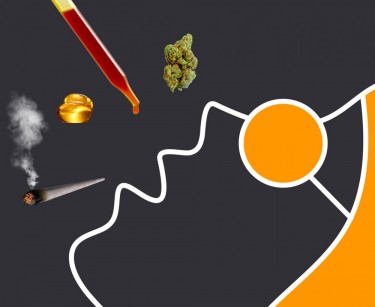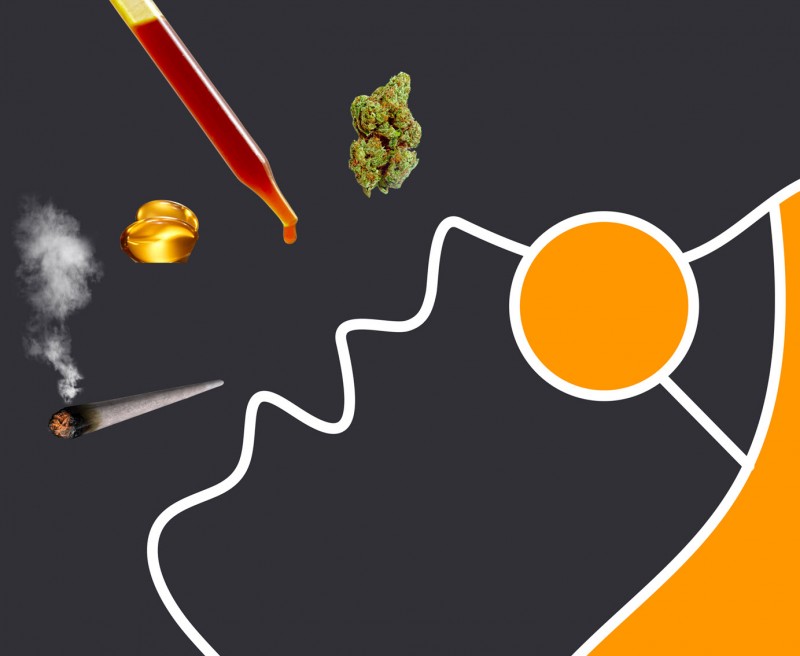How To Increase Your Body’s Absorption Of THC and CBD

Did you know that only a fraction of the CBD present in your gummies would actually make it to your bloodstream?
With the surge in popularity of CBD products these days, not to mention the current craze on anything THC too, it’s surprising that many cannabis consumers still don’t know much about bioavailability. In summary, bioavailability is the rate and degree to which any substance is absorbed in your bloodstream and effectively gets to where it is needed.
In other words, just because a drug has entered your mouth doesn’t mean that it’s already in your blood. You won’t feel it since the body hasn’t absorbed it properly just yet. That’s why you don’t feel your edibles until 30 minutes or later, but it also has to do with why you feel the sedative effects of CBD much quicker especially when dosing it sublingually.
You see, there are just so many ways that THC and CBD can reach the bloodstream. But all of these methods have its own advantages and challenges. While with medications and pharmaceutical drugs you can administer them intravenously (injected directly into the vein this immediately into the bloodstream), with cannabis products the only way you can administer them as of now is extravascular (outside the bloodstream), inhalation (through the nose), oral (through the mouth), oramucosal (through mouth tissue), or topical/transdermal (through the skin).
The thing is, you can consume as much cannabis as you want, but that won’t mean that you’re getting more THC or CBD into your system. That’s because the human body is mostly made up of water, but cannabinoids are fat-loving, resisting any environment that is watery or aqueous. It is also interesting that CBD can penetrate human tissue as much as 10 times more than THC when administration is done transdermally or topically. On the other hand, THC is better absorbed by the body compared to CBD when absorbed through the lungs.
Let’s go through the various methods of administration to see just how much of the THC or CBD you’re actually getting in each, and how you can increase it.
Smoking Joints
There are some factors to keep in mind when learning about the bioavailability of smoking cannabis in a joint. These include the size of the joint, and how much pot you put into it. In 2005, a study revealed that smoked THC yields about 30% bioavailability.
Vaping
Vaping is a much safer and less irritating way to inhale THC and CBD. With the use of a vaporizer pen, you can draw the THC and CBD in oil form stored in a cartridge; it passes through a heater that will atomize the contents, resulting in a vapor that you then inhale. Vaping results in similar blood concentrations to smoking.
When you vaporize either THC or CBD, it enters the lungs directly and from there the cannabinoids are metabolized, giving you much more bioavailability. Some studies report that vaping cannabis results in 34-46% bioavailability, though others claim that it can be as much as 56%. The available information so far reveals that vaporizing CBD or THC is one of the most powerful ways to consume it.
Sublingual Sprays and Drops
When you consume cannabinoids under the tongue, it enables direct absorption from the mucous membranes located in the mouth as well as the nose. This process bypasses the digestive system and enters the bloodstream quickly.
Studies show that bioavailability via sublingual administration doesn’t improve much even if you take higher doses, until the saliva has reached saturation. The average bioavailability is around 35% for sublingual dosing, but you can improve chances of higher absorption by letting the drop or spray sit under your tongue for 30 seconds before you swallow it. This will give your mucous membranes more time to absorb the cannabinoids fully before it passes through the digestive tract.
Transdermal
Cannabinoids can also enter your bloodstream by placing an adhesive patch on your skin. This administration method is known as transdermal. However, since cannabinoids including THC and CBD are extremely fat-soluble and your skin has a water-soluble layer, this can delay or reduce the product’s bioavailability.
Transdermal administration is recommended for people who require consistent doses that aren’t prone to fluctuating, which is common when vaping, smoking, taking edibles or sublingual drops. Many patients also prefer this method because it’s more comfortable compared to others.
Since the only studies of transdermal cannabis delivery were animal studies, we can refer to the popular nicotine patches which were shown to have a high bioavailability rates of 82%.
Oral
Oral consumption includes taking cannabis products through the mouth, such as with edibles, softgels, beverages, and the like. There are many benefits to consuming cannabis orally but it has to pass through the metabolic and digestive tract, which in turn filters out a significant amount of cannabis, reducing its bioavailability.
Studies show that edibles offer a low bioavailability rate of anywhere from 4 to 20%. This means that if you consume 10mg of CBD in a softgel, you’re really only going to absorb 2% of that.
Conclusion
There are some things you can do to increase the chances of better absorption in the body. One is to consume more (healthy) fats, and the other is to medicate when you’ve eaten as compared to a fasted state. Additionally, having food in your stomach when medicating reduces the rate of CBD being eliminated from your blood.
There you have it. Learning about the bioavailability of THC and CBD is helpful especially for people who are medicating for therapeutic purposes, and for people who want to make sure they are getting bang for their buck. What’s your favorite way to medicate?







